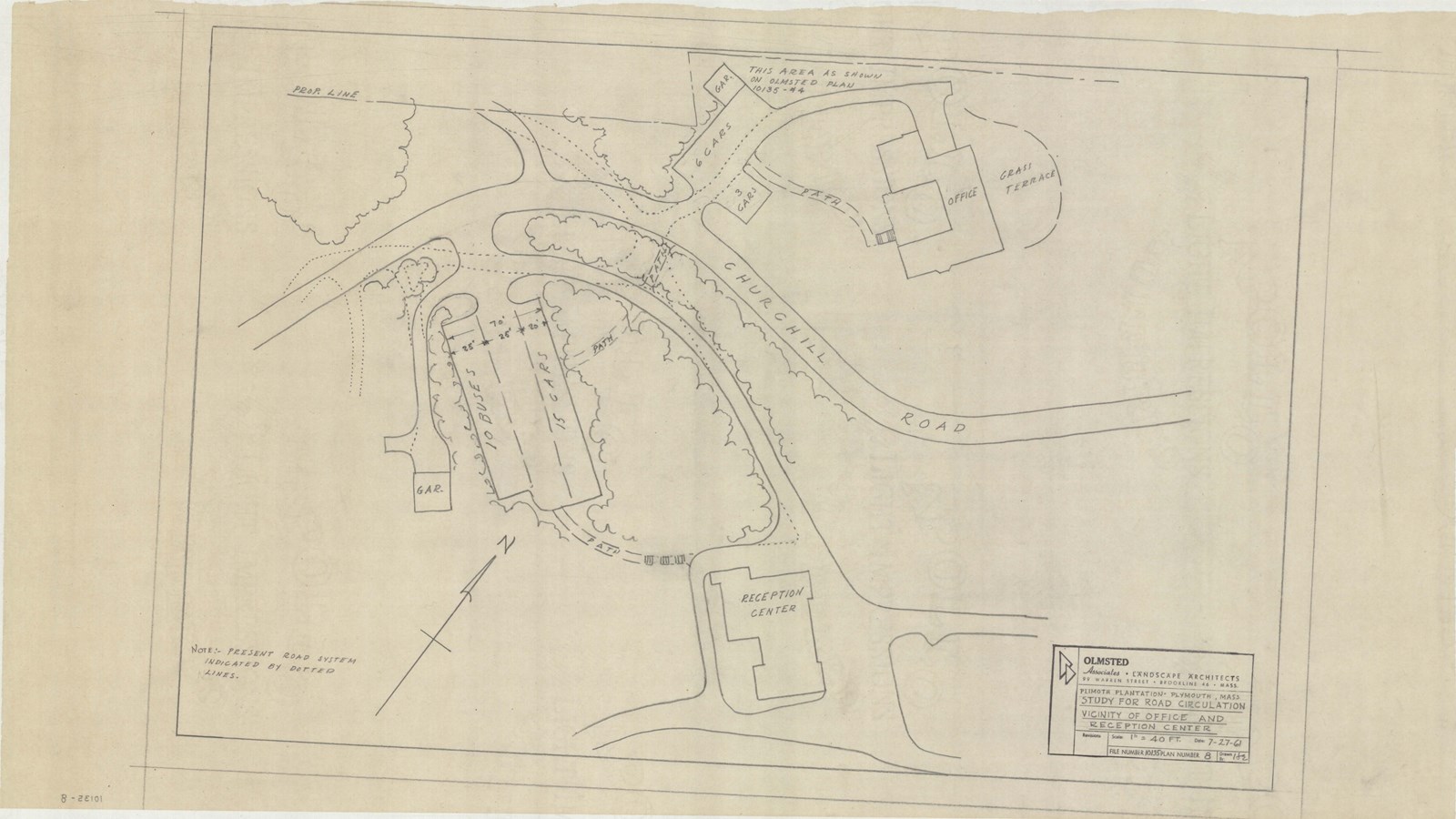Last updated: June 11, 2024
Place
Plimoth Patuxet

Olmsted Archives
Quick Facts
After leaving England aboard the Mayflower, and disembarking in Plymouth, Massachusetts in 1620, this new group of people known as Pilgrims formed their colony. The early years for Pilgrims in Plymouth was a struggle and in 1947, Henry Hornblower decided to turn the land into a museum: Plimoth Patuxet.
Hornblower made a request to Olmsted Brothers in 1919 to create a garden for his country estate at Plimoth, dubbed Eel River Farm. In their design, Olmsted Brothers included road alignments, specimen plantings, and naturalistic features like stone walls, all of which are still present today.
Even with the razing of Eel River Farm during the construction of the museum, many additional built features from Olmsted Brothers were retained, such as a garden circle on a hillside overlooking the river, a ninety-foot-long wall leading to the tea house, as well as ramps and paths made from dirt leading down to the water’s edge.
The garden Olmsted Brothers built for Hornblower, unlike many other deteriorated portions of the estate, has not been impacted by the development of the museum and today remains largely intact.
Source: "Plimoth Patuxet," The Cultural Landscape Foundation
For more information and primary resources, please visit:
Olmsted Research Guide Online
Olmsted Archives on Flickr
Hornblower made a request to Olmsted Brothers in 1919 to create a garden for his country estate at Plimoth, dubbed Eel River Farm. In their design, Olmsted Brothers included road alignments, specimen plantings, and naturalistic features like stone walls, all of which are still present today.
Even with the razing of Eel River Farm during the construction of the museum, many additional built features from Olmsted Brothers were retained, such as a garden circle on a hillside overlooking the river, a ninety-foot-long wall leading to the tea house, as well as ramps and paths made from dirt leading down to the water’s edge.
The garden Olmsted Brothers built for Hornblower, unlike many other deteriorated portions of the estate, has not been impacted by the development of the museum and today remains largely intact.
Source: "Plimoth Patuxet," The Cultural Landscape Foundation
For more information and primary resources, please visit:
Olmsted Research Guide Online
Olmsted Archives on Flickr
